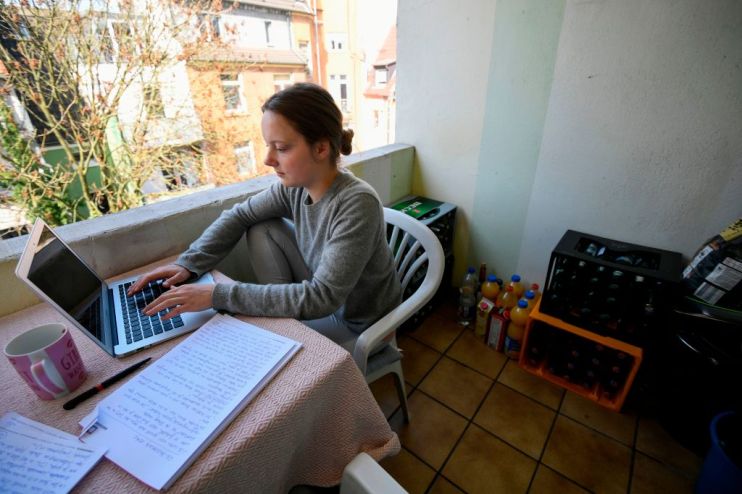Actively inactive: Identifying tension in the UK labour market

The Covid-19 crisis and resulting responses to curb the spread of infections has caused tension to form in pockets of the UK labour market.
Given how important it is to tackle economic inactivity if we are to speed the UK’s recovery, it is vital that these new labour market dynamics are recognised, and that steps are taken to mitigate the impact.
If not, there is a risk that the fall in confidence in employment prospects causes people to drop out of the labour market altogether — forever.
Auditing the labour market
At the onset of the pandemic, demand for labour stalled, driven by firms being instructed to stop operating to reduce the spread of coronavirus. Need for workers recovered (from a low base) as some sectors of the economy reopened. But staff numbers remained low in comparison to pre-pandemic levels — particularly at consumer facing businesses — due to firms following social distancing measures.
Demand for temporary workers experienced an uptick over the summer, particularly in the leisure and hospitality industries. Firms responded to increased consumer spending, partly led by the Eat Out to Help Out scheme and lower VAT rate reducing prices for meals, by resuming recruitment activity.
Now, fears over a resurgence in virus cases and the reintroduction of restrictions on peoples’ lives is dampening the UK’s economic outlook. This is putting downward pressure on consumer confidence, which will likely result in a drop in spending as people prepare for further financial strain by increasing precautionary saving. Firms may respond to falling household expenditure by reneging on hiring processes, causing demand for labour to remain suppressed in the long term.
Identifying sectoral tension
Initial blanket shutdowns hit nearly all sectors of the UK economy. However, as the crisis has developed and policy responses have ebbed between an easing and tightening of restrictions, more nuanced effects have surfaced.
Social distancing measures, curfews, bans on international travel and quarantines have compounded to reduce activity in the retail, leisure, hospitality, and travel industries. In contrast, hot weather, price incentives and the gradual release of pent-up demand combined to drive seasonally higher footfall at pubs, bars and restaurants through the summer months.
Still, despite this progress, the “rule of six” and requirement to maintain one metre of space between people have likely reduced the appeal of recreational activities, while continual concern over contracting coronavirus could have prompted consumers to avoid busy high streets. Following an initial burst, these issues have combined to slow the recovery in consumer spending.
As a result, income shocks have been highly concentrated at firms that have struggled to adjust their operations in line with Covid prevention measures.
Young and older workers acutely hit
Income falls have resulted in staff shake-outs in the retail and hospitality industries in particular. Young people represent a large proportion of these businesses’ workforce, meaning a contraction in staffing levels has sharply impacted them.
At the same time, older workers are at acute risk of suffering long term effects from employment disruption due to the pandemic. Those who have been made redundant in later life often find it harder to find new work or secure a job on a similar wage. People tend to increase saving contributions as they approach retirement, meaning steep income falls will hit older peoples’ retirement resources and may reduce their standard of living in later life.
This is all feeding into inefficient labour market outcomes, due to a high supply of young and older applicants relative to demand for these candidates. Too many people are chasing too few jobs, which is increasing competition for roles and making it harder to secure full-time employment. A “loose labour market” is forming.
Tackling economic inactivity
Lack of confidence in job prospects may be partly contributing to workers dropping out of the labour market altogether. These people — classified as economically inactive — are not counted in official unemployment statistics. So, inflows into the economically inactive cohort are hiding the true scale of joblessness.
A stubbornly high long-term economic inactivity rate will pose roadblocks to the UK’s recovery. Elevated levels of workers waiting on the periphery of the labour market will fuel stagnant wage growth, hold down household income, reduce spending and cause a drain on talent.
The longer this disengagement persists, the greater the mismatch between skills and opportunities could be. This would make it harder for workers who leave the labour market to re-enter it due to their skill sets depreciating in value as industries undergo technological change.
However, these tension points offer a real opportunity to stimulate demand for workers by investing heavily in fast-growing sectors that will form the foundation of the UK’s economy in the future. There has never been a more opportune time to allocate resources to renewable energy production, for example. Software, coding, and cyber security are other high-potential areas.
Balancing trade-offs is a symptom of this pandemic. A swelling economic inactivity rate may be one of the highest prices we will have to pay to protect the population from the dangers of Covid.
Main image credit: Getty